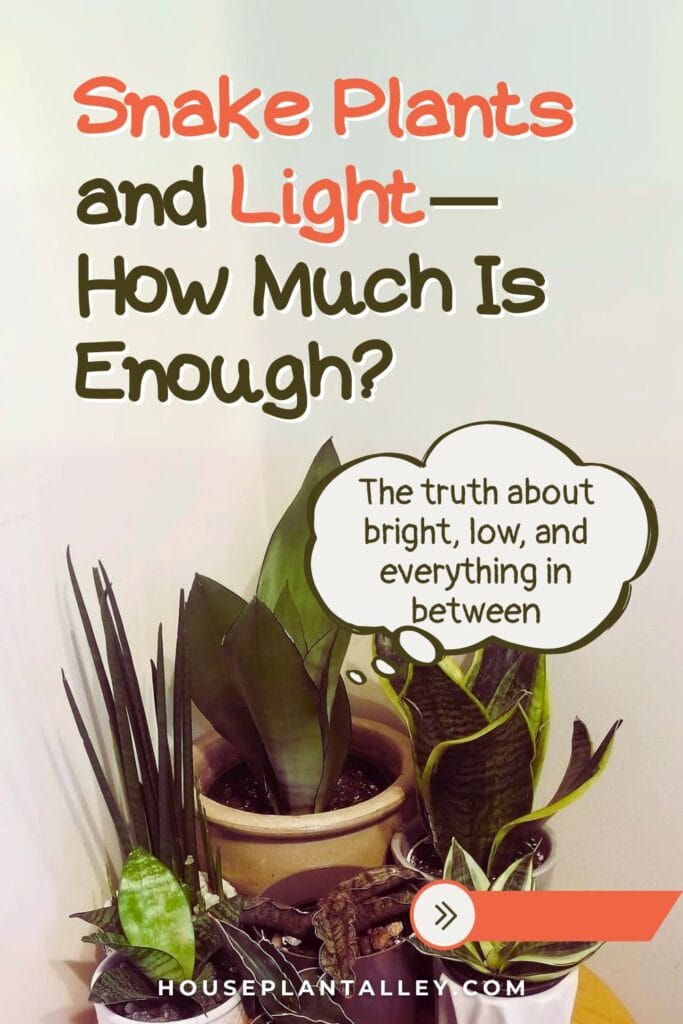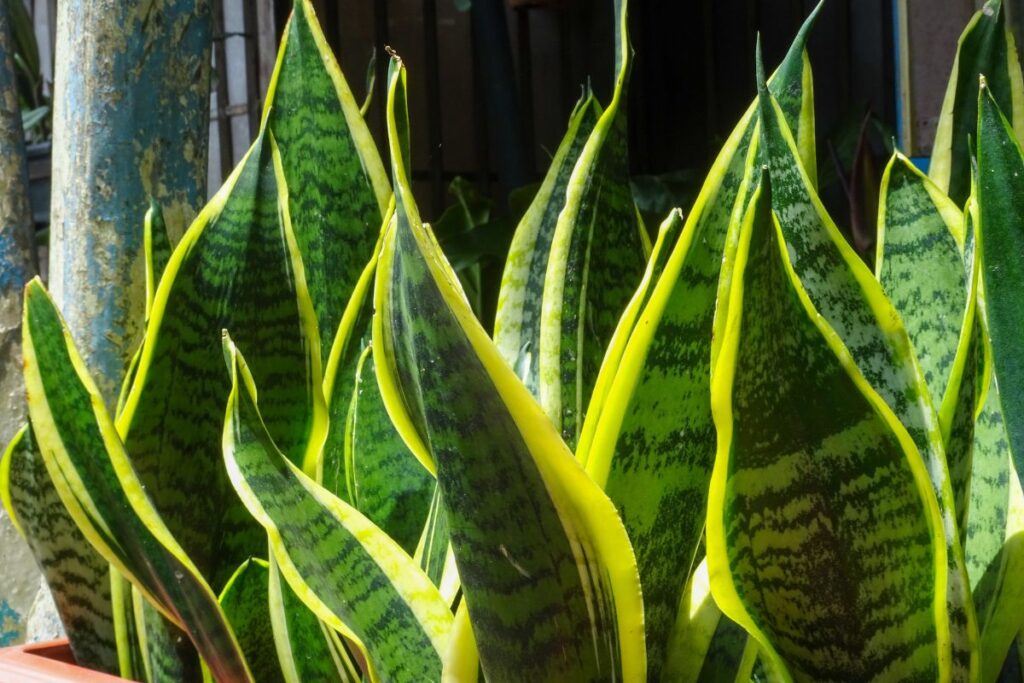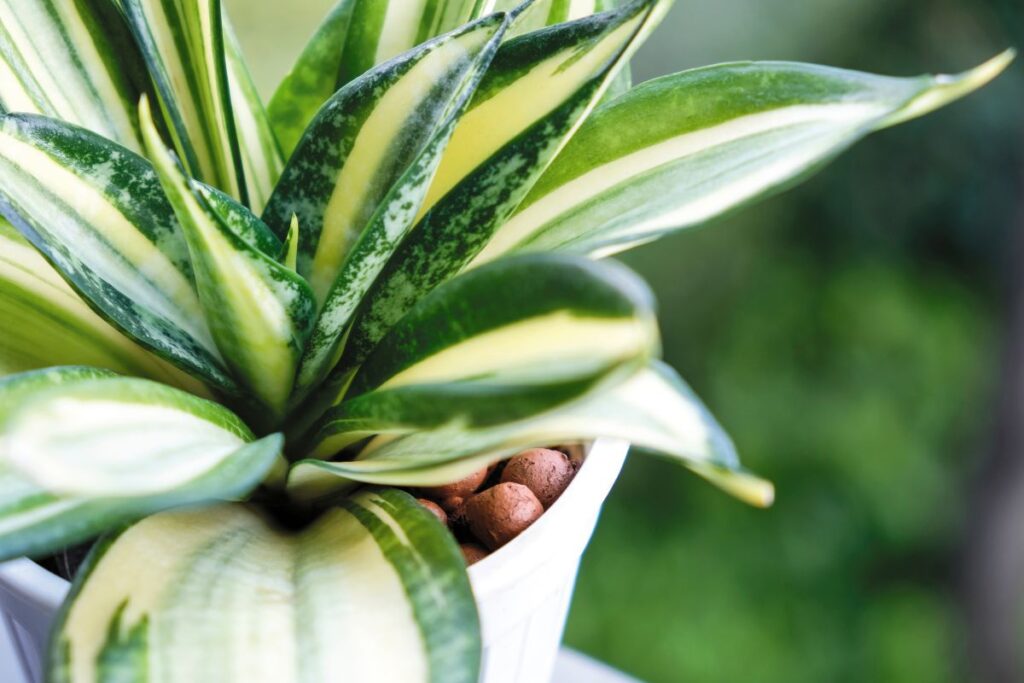Sitting in the sun is something that most of us enjoy, whether we’re walking around outside or simply soaking up those rays through a window. But what about snake plants? How much sun do they need to be happy and healthy? In this article, we’ll explore the answers to these questions as well as some tips on how you can give your snake plant just the right amount of sunshine.

Snake plants are incredibly resilient and low-maintenance houseplants. Hailing from tropical climates with warm temperatures, they don’t require too much special attention when it comes to lighting conditions—but understanding their needs is key to keeping them looking lush and vibrant!
When it comes to providing enough sunlight for your snake plant, there’s no one size fits all answer; instead, there are several factors at play that will determine how much light your particular species needs. We’ll discuss these elements in more detail later on in the article so keep reading if you want to learn more about giving your plant the perfect dose of sunshine!
Contents
- 1 Can A Snake Plant Live In Low Light?
- 2 How Much Sun Do Snake Plants Need?
- 3 How Do I Know If My Snake Plant Is Getting Enough Sun?
- 4 Where Should Snake Plant Be Placed At Home?
- 5 How Dark Is Too Dark For A Snake Plant?
- 6 How Often Should I Water My Snake Plant In Low Light?
- 7 How Much Direct Sun Should A Snake Plant Get?
- 8 Can Snake Plants Live With Only Artificial Light?
- 9 Can A Snake Plant Live In A Room With No Windows?
- 10 Conclusion
Can A Snake Plant Live In Low Light?
Yes, snake plants can survive in low-light conditions. They actually prefer indirect sunlight or indirect light rather than extremely bright light. In fact, too much direct sunlight may cause the leaves to become scorched and brown. Too little light will lead to pale yellowing of the leaves and a decrease in growth rate.
Snake plants are quite hardy so they don’t require loads of attention when it comes to their lighting needs. To keep them happy, just make sure that you provide your plant with enough indirect light from either an east- or west-facing window for at least four hours a day. You should also be aware that if the room gets very dark during nighttime, your plant’s growth could slow down significantly.

How Much Sun Do Snake Plants Need?
Snake plants are a popular choice for many indoor gardeners. One of the great things about snake plants is that they don’t need much sun to thrive. But, just how much sun do these hardy houseplants really require?
In general, snake plants should not be exposed to too much direct sunlight as this can damage their leaves. However, if you have a south-facing window and your plant is kept at least two feet away from it, then some indirect light may actually benefit your plant. Otherwise, artificial or fluorescent light sources like grow lights will provide enough light without exposing them to too much heat or intense light rays.
So when it comes to caring for your snake plant, err on the side of caution and avoid placing them near windows where they could receive full sun exposure. This way you can ensure that your beloved snake plant remains healthy and happy all year round!

How Do I Know If My Snake Plant Is Getting Enough Sun?
It’s important to know how much sun your snake plant needs in order to keep it healthy. Snake plants prefer bright, indirect sunlight and should be kept away from intense direct light. If you notice the leaves of your snake plant turning yellow or brown, that could indicate too much exposure to natural light.
In general, a few hours of indirect sunshine each day is ideal for a snake plant. You can tell if your plant is getting enough sunlight if its colors are vibrant and there are no signs of wilting or stress. However, too much bright sunlight can cause damage so try to find an area with bright but indirect sunlight and make sure it gets some shade during the peak afternoon sun. With the right balance of natural light and protection from direct rays, your snake plant will thrive!
Where Should Snake Plant Be Placed At Home?
Like any relationship, the one between you and your snake plant is delicate. You need to create a balance that works for both of you. To make sure your plant thrives, it’s important to think about where in your home it should live.
The ideal light conditions for most snake plants are medium or indirect light from either natural sunlight coming through a west-facing window or from artificial lights such as fluorescent lamps. If you place them too close to a sunny window, the direct rays may burn their leaves. On the other hand, if they don’t get enough light, their stems can become weak and floppy.

But just like people need different levels of stimulation depending on their individual personalities, some snake plants can tolerate more sun than others so experiment to find what’s right for yours! With patience and care, you can have a healthy and happy snake plant living with you at home.
How Dark Is Too Dark For A Snake Plant?
Snake plants are very resilient and can tolerate a wide range of light conditions. However, their lowest leaves will begin to yellow if they don’t get enough sunlight—so it’s important to make sure they’re getting enough light. If there isn’t sufficient natural light available in your home, you may need to consider adding artificial lighting such as fluorescent lights or dim bulbs. This way, even if the sun doesn’t come through the windows, your snake plant will still get the amount of light it needs.
On the other hand, too much direct sunlight can also be damaging for a snake plant. So when deciding where to place yours, try to pick an area that has bright but indirect sunlight throughout most of the day. That way, you’ll ensure that your plant gets just the right amount of light without going overboard!
How Often Should I Water My Snake Plant In Low Light?
As darkness settles in, the care of a snake plant changes drastically. Like sunlight is to plants, water is to snake plants: too much can be hazardous and not enough will stunt growth. To keep your snake plant healthy while it’s in low light conditions, you need an effective watering schedule.
Balancing light issues with proper snake plant care requires knowing how often to water without direct sunshine. Snake plants prefer soil that has been allowed to dry out completely between each watering session. For most indoor locations, this means once every two weeks or so. However, if your home’s humidity levels are particularly low—as is common during winter months—then increase watering frequency slightly to avoid dehydration. In any case, always check the top few inches of soil for moisture before adding more water.
With such simple guidelines, caring for a snake plant in less-than-ideal lighting situations doesn’t have to be daunting! As long as you’re consistent about checking the soil moisture and keeping up with your regular watering schedule, your snake plant should thrive even in areas where there isn’t much natural light available.
How Much Direct Sun Should A Snake Plant Get?

Snake plants are quite resilient and can handle a lot of neglect. However, it’s still important to understand how much direct sun they need in order to keep them healthy. If your snake plant is receiving too much light, you may notice its leaves turning brown or shriveling up, which are signs of excessive light exposure.
If you’re wondering about the ideal amount of sunlight for your snake plant, it really depends on the environment. In most cases, you want to avoid placing it near windows without curtains that let in lots of bright light since this could be too intense for your plant. You also don’t want any full-spectrum lighting such as fluorescent bulbs shining directly on your snake plant as this will contain all wavelengths of visible light and might cause damage over time. Instead, consider investing in an LED or incandescent bulb designed specifically for indoor plants like spider plants and snake plants. This should provide enough indirect light while protecting the plant from potentially harmful rays.
It’s best to experiment by gradually exposing the plant to more sunlight each day until you find what works for your individual situation. Don’t worry if you make mistakes along the way—just pay attention to changes in leaf color and shape so you’ll know when it’s time to adjust!
Can Snake Plants Live With Only Artificial Light?
Moving on from how much direct sun a snake plant needs, let’s look at whether artificial light alone is sufficient. Generally speaking, most types of snake plants will thrive when exposed to any type of grow light or even an incandescent bulb. In fact, it can be beneficial to limit exposure to natural sunlight and rely more heavily on LED lights or other forms of artificial lighting instead. This is because while some indirect sunshine can help the plant develop strong leaves and roots, too much exposure could cause them to become scorched and discolored.
However, if you don’t provide your snake plant with enough artificial light, then this could lead to stunted growth and yellowing leaves—symptoms that signify insufficient light. It’s also important not to place your snake plant too far away from the source of its artificial illumination; for optimal results, try keeping it within two feet of the lamp or bulb. All in all, providing your snake plant with adequate levels of both natural and/or artificial lighting should ensure healthy growth and maintenance over time!
Can A Snake Plant Live In A Room With No Windows?
Wow, is it really possible for a snake plant to live in a room with no windows? It sounds almost too good to be true. After all, these popular indoor plants need bright light and adequate sunlight to survive.
The truth is that although snake plants can thrive indoors without any natural lighting, they still require some exposure to the right type of light spectrum. If you are looking to keep one on your window sill or near south-facing windows, then this could provide enough indirect light for your plant’s needs. However, if there are no windows in the room at all (or not enough), then an artificial grow light might help supplement the inadequate light levels—just make sure to use it sparingly so as not to cause damage!
Conclusion
In conclusion, snake plants are surprisingly resilient when it comes to light. While they do need some sunlight, they can survive in low-light conditions and don’t require direct sunlight like other houseplants. They even thrive under artificial lighting! The key is knowing how much sun your particular plant needs so that you can give it the right amount of care for its environment.
Interestingly enough, research has found that a single snake plant placed in an office cubicle can filter up to 87% of toxins from the air within 24 hours! This makes them a great choice if you’re looking for ways to purify your home’s air quality without breaking the bank.
Ultimately, take some time to learn about your snake plant’s specific needs and adjust accordingly so that it stays healthy and happy for years to come! With the right balance of sun exposure and regular watering, your plant will stay vibrant and strong no matter where you choose to keep it.
